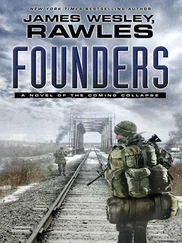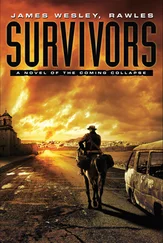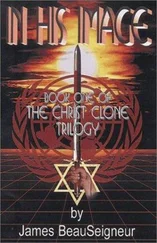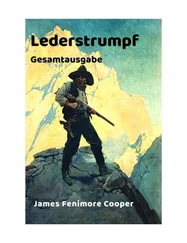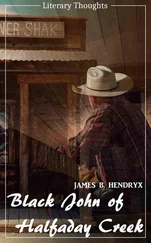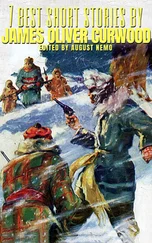• • •
Once the mass inflation started, Jake, Janelle, and José had a meeting. Jake realized that unless something changed quickly, their store shelves would be stripped clean, and they would be left holding nothing but worthless dollars. José suggested a “cash only” policy and regularly ratcheting up prices, but Janelle wanted to go a step further and post a “silver only” sales policy. The discussion was fairly brief. Janelle pointed out that their entire inventory would be irreplaceable until normal industry and transportation were reestablished. As Janelle put it, “We should think of what we currently have on the shelf as our legacy inventory. If we replace it with anything that we pick up in barter, it will mainly be used, secondhand stuff, and it should be priced accordingly. It would be foolish to sell what we have now cheap.”
The others agreed.
After a two-day period while they were “Closed for Inventory,” they reopened with a carefully hand-painted sign on a four-by-eight-foot sheet of plywood displayed inside the front door, hanging from the ceiling on chains. It read:
Altmiller’s Hardware Payment Policy:
ONLY Silver or Barter Accepted for Payment.
NO Paper Currency, Credit Cards, or Checks!
NO EXCEPTIONS!
Until further notice, we now accept ONLY pre-1965 U.S. silver dimes, quarters, half-dollars or silver dollars, at 10 times face value, or 99.9% silver trade dollars and bars.
No pennies or clad coins accepted.
To calculate your prices in silver:
Take the shelf tag prices and divide by 10. That is your price in 90% silver (pre-1965) coins. So a $3 tagged lightbulb will cost 3 silver dimes (30 cents).
99.9% silver trade dollars and bars are also accepted at the following ratio:
0.0715 troy ounces per silver dime or 0.715 troy ounces per dollar of face value (10 dimes or four quarters). Hence, a 1-Troy-ounce trade round or bar equals $1.40 face value in pre-1965 coinage. (Loaner calculators are available on request.)
Nickel Small Change Policy:
As needed, we will make “small change” in real nickels (pre-composition-switch vintage nickels), at the ratio of 50 nickels per silver dime (500 nickels per silver dollar). We MAY at our discretion take nickels in payment for small purchases, but only if nickels are in full 50-coin rolls.
Note: Some choice hard goods such as guns, ammunition, high-cap magazines, clean steel hardware, batteries, and sealed liquor bottles MAY be considered for barter, on a case-by-case basis. See Jacob Altmiller for details.
Sorry for Any Inconvenience J. Altmiller, Owner and Manager
The only items that had their prices recalculated and retagged before the Altmillers reopened the store were irreplaceable guns, ammunition, gun accessories, empty gas cans, cans of two-cycle mix and four-cycle TRUFUEL, and charged propane cylinders. Those prices were all tripled or quadrupled.
• • •
During one of their regular calls, Rhiannon and Janelle were discussing the Crunch and how things were obviously getting much worse in America’s big cities. The riots and looting were spreading. After recounting a long list of cities where riots had occurred, Janelle moaned, “I’m really worried, Rhi.”
She took an audible breath, and continued, “On Fox News they’re saying that in a lot of cities, the police and firemen aren’t showing up for work because they’re too worried about their own families to leave their homes. There’s also reporting that some of the telephone and power utility workers are staying home, too. Nobody knows how much longer the power will stay on.”
Not wanting to upset her sister even more, Rhiannon adopted a reassuring tone. “Well, just know that we’ll be praying for y’all and—”
Their connection unexpectedly went dead. They both made dozens of attempts to reach each other in the days and weeks that followed. At first Janelle got “All circuits are busy now” automated messages. But a week later, there wasn’t even a dial tone. It was then that Janelle feared it might be years before she’d be able to speak to her sister again.
“Until recent times, every child had a rifle of his own as soon as he was old enough to understand his father’s instructions. With it he hunted game and birds, killed snakes and protected himself against the dangers of rural life. When he was grown, he passed knowledge of the rifle down to his own son…. The tradition of arms is an American tradition born of generations of self-reliance, self-sufficiency and independence….”
—T. Grady Gallant,
On Valor’s Side
Tavares, Florida—October, the First Year
While the store was closed, José Valentin went to work installing a buzzer-activated latch on the front door, similar to those that had long been used at jewelry stores and some pawnshops in Orlando and Miami. He did all this work as Jake stood guard behind him with the L. C. Smith double-barrel shotgun he’d inherited from his grandfather.
As José was testing the completed door latch, he said, “You know, boss, you really need a couple of better long guns. That blunderbuss and your .30-30 just won’t cut it when Schumer hits the fan.”
Jake nodded. “I suppose you’re right. What do you recommend?”
“Instead of that side-by-side, you should get something like a Saiga shotgun with a detachable magazine. And instead of your .30-30 cowboy gun, you should have an AR-10 or maybe an FAL if you can find one. Marichal can hook you up, but they won’t come cheap these days.”
“Prices are all relative, José. If you put it in terms of, say… the value of the lives of my wife and son—”
Valentin interrupted. “Ehhhh-xactly.”
After his discussion with José, Jake made a series of trades with Marichal. In all, Jake traded 110 ounces of silver in 10-ounce and 50-ounce bars—his entire hoard that he’d accumulated since 2001—plus a promissory note for another hundred ounces of silver. In exchange he received two of Marichal’s most valuable and irreplaceable guns: a Russian-made Saiga-12 shotgun with six spare plastic 10-round magazines and a LAR-8 variant of the AR-10 with nine 20-round steel FN FAL magazines. The Rock River Arms LAR-8 was designed to accept either FN FAL or L1A1 magazines.
A new sign outside the door announced: LIMIT: TWO CUSTOMERS IN STORE AT A TIME. THANKS FOR YOUR PATIENCE. The Altmillers also erected an inexpensive fabric gazebo awning in front of the store, where customers could queue in the shade before entering the store to do business.
As one of the few functioning businesses left in town, setting up the gazebo had the unintended consequence of creating a place of barter for customers as they waited. This eventually spilled out into the paved parking lot in front of the store, turning it into a six-day-a week bazaar. By the time customers reached the head of the line, they had traded for the silver coins they would need to make purchases inside.
One important change before Altmiller’s Hardware reopened was that Jake hired Tomas Marichal as a full-time security guard. He was paid three dollars per day in pre-1965 coinage, or his choice of store merchandise at cost, in barter. He was also provided display counter space to sell his own extra guns, which he priced at what first seemed to be exorbitantly high prices. For example, a run-of-the-mill DPMS brand M4gery with iron sights and five spare magazines was priced at $350 in silver coin. Even with his high asking prices, though, Marichal gradually sold most of his AR-15, AR-10, and SIG556 rifles.
Tomas Marichal was an imposing figure at six feet two inches and a muscular 230 pounds. In his new role, he became a fixture at the store. In essence, Tomas was on duty twenty-four hours a day. He slept on a folding bed in the back of the store, and he was encouraged to be armed at all times. He took this seriously, opting to carry both an M4gery carbine and a Glock Model 23 pistol everywhere he went, with three spare magazines for each in belt pouches.
Читать дальше




